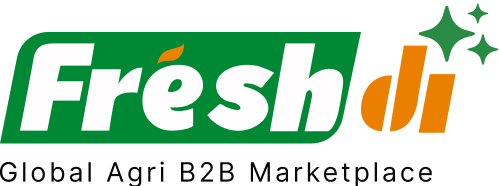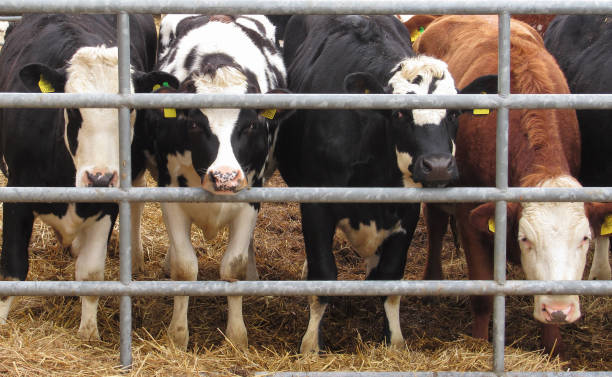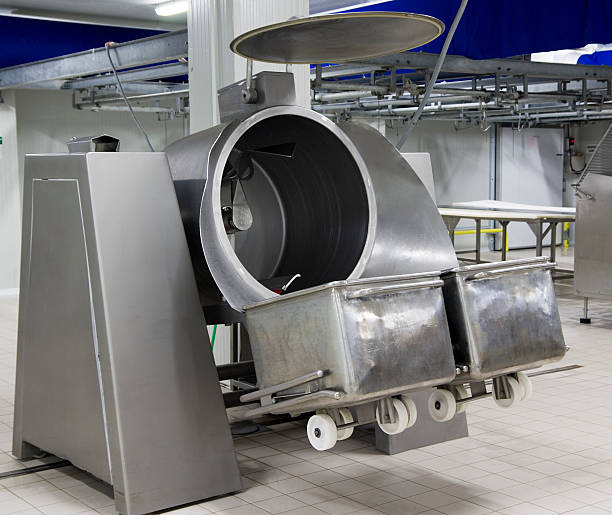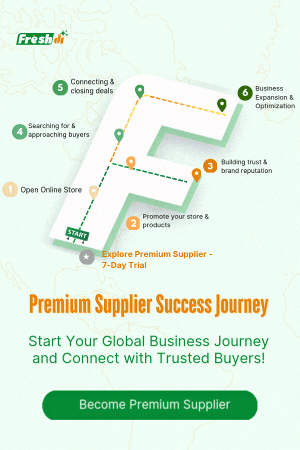Introduction – Austria’s Cattle Market: A Quantitative Overview
Austria might not be the first country that comes to mind when we talk about beef giants, but don’t underestimate it. As of December 2024, Austria’s cattle population stood at a solid 1.82 million head, despite a slight 0.8% dip from the previous year. With over half a million dairy cows and a beef production value of €926 million in 2023, cattle farming remains a cornerstone of Austrian agriculture, accounting for 20% of the country’s total animal production.
But here’s the twist — while Austria produces a significant amount of high-quality beef and live cattle, the country is simultaneously dealing with challenges like disease outbreaks and a declining number of farms. So, if you’re a buyer or trader looking to tap into Austria’s cattle export market, it’s not just about quantity — it’s about quality, traceability, and resilience.
That’s where a data-driven approach comes in handy. Platforms like Freshdi make it easier to assess supplier performance, track RFQ (Request for Quotation) trends, and verify certifications — all in one place.
Let’s dig deeper into the numbers and trends shaping Austria’s position in the global cattle trade.
Deep Dive – Key Production, Export Statistics & Market Signals
Austria’s self-sufficiency rate in beef hit 148% in 2023. That means they’re producing way more than they need — a great sign for export potential. But what’s actually happening on the ground?
- Live Cattle Exports (2022): $66.9 million
-
Top destinations: Italy, Germany, Turkey, Azerbaijan, France.
-
Frozen Boneless Bovine Meat Exports (2024): $117.98 million
- Total volume: 19,681,600 kg
-
Major markets: Germany ($59.05M), Netherlands ($13.52M), Switzerland ($7.67M), Czech Republic ($6.24M), Sweden ($5.52M)
-
Frozen Beef Imports (2024): $70 million
-
Main sources: Germany ($49.6M), Poland, Netherlands, Italy, France
-
Top RFQ Trends on Freshdi: Indicate sustained interest in Austrian beef from Western and Central Europe, especially for premium and organic beef cuts.
Despite the decline in the number of cattle farms (down 1.9% to around 50,400 farms), the average herd size remained steady at 36 cattle per farm. This suggests consolidation rather than collapse — larger, more efficient operations replacing smaller ones.
Top 8 Verified Cattle Suppliers in Austria – Export Champions of 2025
These suppliers were selected based on export volumes, international presence, verified certifications, and buyer feedback on Freshdi. They represent the best of Austria’s cattle industry in 2025.
1. HOFMANUFAKTUR.AT
Specializes in organic and grass-fed beef. Known for ethical farming practices and excellent traceability systems.
2. SCHLACHTHOF ARTMAYR GES.M.B.H.
A key player with large-scale operations in Upper Austria. Supplies premium beef cuts across Europe.
3. ALPENRIND GMBH
Located in Salzburg, they focus on high-quality beef and veal. Strong export volume to Germany and Switzerland.
4. GÜNTER KEMPTER GESELLSCHAFT M.B.H.
Trusted supplier with long-standing relationships in Central and Eastern Europe. Known for reliability and scale.
5. STÜRZENBECHER FLEISCHHANDELSGES.MBH
Mid-sized but highly agile supplier, ideal for custom and small-batch orders. Excellent service ratings on Freshdi.
6. COWRINTHIA
Focused on premium cattle breeds and genetic quality. Supplies both live animals and meat products.
7. WEINGUT RENATE UND JOHANNES DEIMEL
Unique supplier combining winemaking with cattle farming. Offers boutique-level beef with terroir-driven characteristics.
8. CHRISTOPH MOOSBRUGGER, AGRAR HANDEL & TRANSPORTE
A logistics-savvy supplier with a wide transportation network. Suitable for buyers seeking fast, transnational delivery.
Dynamic Ranking Note
Supplier rankings on platforms like Freshdi are updated frequently, with “Supplier of the Month” or “Top Performer of the Quarter” badges based on recent RFQ volumes, fulfillment rates, and client reviews.
Market Navigation – Statistical Trends, Price Insights & Export Dynamics
Austria’s cattle market is like a living organism — constantly shifting with seasons, global economics, and even weather.
Demand Trends
In 2024, demand from Germany and the Netherlands remained steady, but overall export volumes dipped. Still, Austria held onto its niche for high-quality, hormone-free beef — a segment that continues to gain traction in Europe.
Seasonal Price Fluctuations
Prices usually spike in late winter and early spring. Why? Because cattle raised on pasture are less available, and feed costs go up. Summer and early autumn bring price dips due to increased supply from grazing herds.
Think of it like the stock market — timing your purchases can result in significant savings, especially for bulk buyers.
Forecast for 2025
With herd reductions in countries like the U.S. and Brazil, gaps are forming in the global beef supply. Austrian suppliers are well-positioned to step in. But internal factors like feed prices and labor shortages may limit how much they can scale.
Global Signals
The USDA reported mixed dairy and beef trends in Europe. While some areas ramp up production, others pull back due to economic pressures. Austria sits somewhere in the middle — cautious but prepared.
Conclusion – Leveraging Data for Informed Procurement
Austria’s cattle sector is resilient, data-rich, and ready to serve high-demand markets. From boutique organic farms to industrial-scale processors, the country offers a wide range of suppliers for every need. But navigating this landscape without data is like driving blindfolded.
That’s where platforms like Freshdi come in — they empower buyers with market insights, supplier verification tools, RFQ trends, and real-time performance metrics.
Cattle Buyer’s Checklist for Austria (2025 Edition)
✅ Identify high-performing exporters via Freshdi ratings
✅ Time purchases around seasonal price dips
✅ Prioritize suppliers with disease-free certifications
✅ Track RFQ trends to spot market movements
✅ Consider logistics capabilities for cross-border delivery
Future Outlook
Heading into 2025 and beyond, Austria’s cattle export market is set to benefit from global supply gaps and rising demand for premium, traceable beef. However, buyers must stay alert to disease outbreaks, regulatory shifts, and climate-related risks. Data-driven sourcing will be the name of the game.
How Freshdi Empowers Cattle Buyers
- 📊 Real-time RFQ tracking and supplier analytics
- ✅ Verified supplier certifications and profiles
- 📈 Export volume trends by region and category
- 🧠 Smart AI-matching for buyer-supplier alignment
- 🌍 Market insights tailored to buyer geography
Whether you’re sourcing live cattle or premium beef cuts, Freshdi helps you make smarter, faster, and safer procurement decisions.
References
- Austria Cattle Statistics – TradingEconomics
- Austria Cattle Meat Production – TradingEconomics
- Animal Production in Austria – info.bml.gv.at
- OEC – Austria Bovine Exports 2022
- World Bank Trade Data 2024
- Reuters – Bluetongue Disease Outbreak
- AP News – Foot-and-Mouth Disease in Europe
- IndexBox – Austria Beef Market Report
- USDA Weekly Dairy and Beef Trends – DairyNews
FAQs
1. What is Austria’s main cattle export product?
Austria mainly exports frozen boneless bovine meat, especially to Germany, the Netherlands, and Switzerland.
2. Are Austrian cattle suppliers certified for international trade?
Yes, top suppliers listed on platforms like Freshdi provide traceability, animal welfare, and disease-free certifications.
3. When is the best time to buy cattle from Austria?
Late summer to early autumn typically sees lower prices due to seasonal supply increases.
4. How are supplier rankings determined on Freshdi?
Through export volumes, RFQ activity, buyer ratings, and fulfillment performance.
5. Is Austria’s cattle industry affected by disease outbreaks?
Yes, recent bluetongue and foot-and-mouth outbreaks have impacted some regions. Always check for up-to-date certifications.





